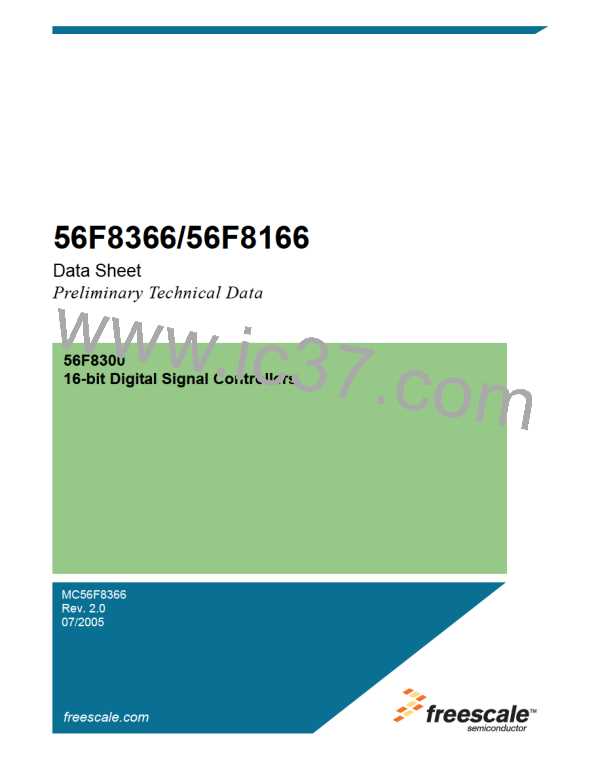Signal Pins
Table 2-2 Signal and Package Information for the 144-Pin LQFP
State
Signal Name
Pin No.
Type
During
Reset
Signal Description
TXD1
42
Output
Tri-stated
Input
Transmit Data — SCI1 transmit data output
(GPIOD6)
Input/
Port D GPIO — This GPIO pin can be individually programmed as
Output
an input or output pin.
After reset, the default state is SCI output.
To deactivate the internal pull-up resistor, clear bit 6 in the
GPIOD_PUR register.
RXD1
43
Input
Input
Input
Receive Data — SCI1 receive data input
(GPIOD7)
Input/
Port D GPIO — This GPIO pin can be individually programmed as
Output
an input or output pin.
After reset, the default state is SCI input.
To deactivate the internal pull-up resistor, clear bit 7 in the
GPIOD_PUR register.
TCK
TMS
121
122
Schmitt
Input
Input,
pulled low
internally
Test Clock Input — This input pin provides a gated clock to
synchronize the test logic and shift serial data to the JTAG/EOnCE
port. The pin is connected internally to a pull-down resistor.
Schmitt
Input
Input,
pulled high
internally
Test Mode Select Input — This input pin is used to sequence the
JTAG TAP controller’s state machine. It is sampled on the rising
edge of TCK and has an on-chip pull-up resistor.
To deactivate the internal pull-up resistor, set the JTAG bit in the
SIM_PUDR register.
TDI
123
124
Schmitt
Input
Input,
pulled high
internally
Test Data Input — This input pin provides a serial input data
stream to the JTAG/EOnCE port. It is sampled on the rising edge
of TCK and has an on-chip pull-up resistor.
To deactivate the internal pull-up resistor, set the JTAG bit in the
SIM_PUDR register.
TDO
Output
Tri-stated
Test Data Output — This tri-stateable output pin provides a serial
output data stream from the JTAG/EOnCE port. It is driven in the
shift-IR and shift-DR controller states, and changes on the falling
edge of TCK.
56F8366 Technical Data, Rev. 2.0
Freescale Semiconductor
Preliminary
27

 FREESCALE [ Freescale ]
FREESCALE [ Freescale ]